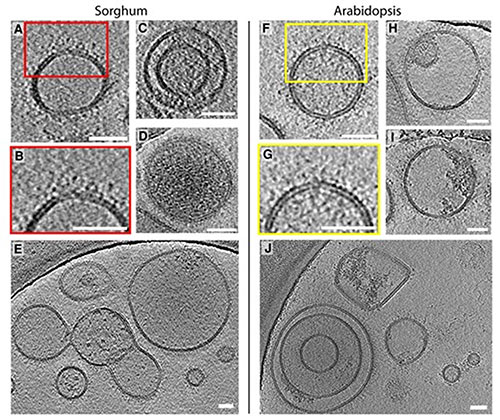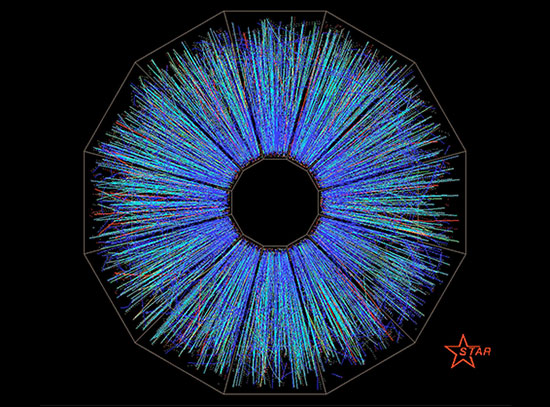Study Reveals Shared Proteins in Plant Communication Systems
June 12, 2024
The Science
While characterizing extracellular vesicles (EVs), plant organelles involved in intercellular communications, scientists found striking similarities in two different species.
The Impact
These findings suggest EVs may have a shared function across different plant species. This could help scientists uncover more about plant defense against diseases.
Summary
Extracellular vesicles (EVs) are tiny, bubble-shaped structures that are found in both plants and animals and play an important role in cell communication and defense against pathogens. While a lot is known about EVs in animals, our understanding of plant EVs is still growing. Researchers from The University of Delaware, Indiana University, and the Laboratory for BioMolecular Structure (LBMS) at Brookhaven National Laboratory have isolated and studied EVs from sorghum and Arabidopsis leaves using advanced techniques like nanoparticle tracking and electron microscopy to learn more.
Cryo-Electron Tomography (Cryo-ET) characterization of EVs from the monocot (one embryo leaf) sorghum and distantly related eudicot (two embryo leaves) Arabidopsis revealed that these structures were diverse in size, shape, and composition in each plant. The team decided to take a more extensive look at 482 isolated sorghum EVs. They found that a vast majority (92%) were smaller and single-layered as opposed to larger and multilayered (6.8%). Using Cryo-ET micrographs, they also found some (8%) to be electron-dense, suggesting they were carrying more molecular cargo. Similar morphological diversity is seen in mammalian-derived vesicles
Analysis of sorghum and Arabidopsis EV proteins highlighted their similar involvement in various cellular processes, resembling those found in other plant EVs. This indicates a degree of conservation in the functions and composition of EVs across plant species. The researchers also tested whether certain proteins could serve as markers for these EVs. They found that some antibodies designed for Arabidopsis EV proteins could also bind to similar proteins in sorghum EVs.
Download the research summary slide (PDF)
Related Links
Contact
Jeffrey L Caplan
University of Delaware
jcaplan@udel.edu
Publications
Timothy Chaya, Aparajita Banerjee, Brian D Rutter, Deji Adekanye, Jean Ross, Guobin Hu, Roger W Innes, Jeffrey L Caplan, The extracellular vesicle proteomes of Sorghum bicolor and Arabidopsis thaliana are partially conserved, Plant Physiology, Volume 194, Issue 3, March 2024, Pages 1481–1497, https://doi.org/10.1093/plphys/kiad644
Funding
Funding for staff and reagents was provided by the Department of Energy (DOE) Office of Biological and Environmental Research (BER) program DOE (DE-SC0020348). Microscopy equipment was acquired by shared instrumentation grants from the National Institutes of Health (S10 OD030321 and S10 OD025165), and microscopy access was supported by grants from the National Institute of General Medical Sciences (P20 GM103446 and P20 GM139760) and the State of Delaware. The Laboratory for BioMolecular Structure (LBMS) is supported by the DOE Office of BER (KP1607011).
2024-22397 | INT/EXT | Newsroom










